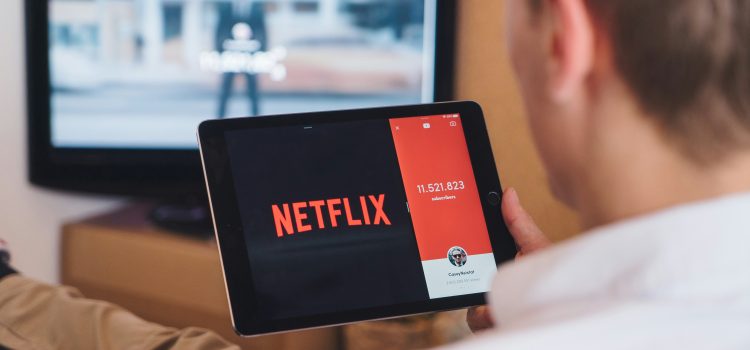
This is a free excerpt from one of Shortform’s Articles. We give you all the important information you need to know about current events and more.
Don't miss out on the whole story. Sign up for a free trial here .
What’s behind the explosive 600% growth in subscription services over the past decade? Why are more consumers hitting their breaking point with recurring payments?
The rise of subscription-based services has transformed how we access everything from entertainment to groceries. As companies shift from selling products to renting access, consumers face mounting costs, frustrating cancellation processes, and questions about the true value they receive.
Keep reading to discover how subscription fatigue is reshaping consumer behavior and what it means for the future of the subscription economy.
Subscription Fatigue
The subscription economy has grown 600% in the past decade and is projected to reach $1.5 trillion by 2025. However, as these services seep into every aspect of modern life—from streaming entertainment to grocery delivery—consumers are experiencing growing subscription fatigue due to rising costs, difficulty canceling, and a perceived mismatch between price and value. In response, the Federal Trade Commission has proposed a “click to cancel” rule that could make subscription cancellations as easy as sign-ups, potentially reshaping the industry.
We’ll examine what subscription fatigue is and why it’s significant, how rising costs and restricted services impact subscriber satisfaction, and how businesses and the government might address consumer fatigue.
What Is Subscription Fatigue?
Subscription fatigue is the growing sense of exhaustion consumers experience while managing numerous recurring payments for digital and physical services and goods, often feeling they’re overpaying and trapped in unwanted subscriptions.
Subscription models date back to early 1800s magazines. They’ve evolved to encompass a vast array of modern services—from streaming media to meditation apps, gym memberships, and meal kits. Their popularity initially stemmed from customer-centric approaches and the convenience of automated purchases; their more recent growth reflects corporations’ shift toward a model in which consumers rent rather than own content and goods.
A 2024 CNET study found US adults spend an average of $91 a month on subscriptions, with two-thirds reporting that at least one of those subscriptions increased in price over the past year.
Research shows financially vulnerable individuals often struggle to cancel unwanted subscriptions, while automatic renewals lead many to pay for forgotten services. Companies can boost their revenue by up to 200% from customers who fail to cancel subscriptions.
The subscription economy has grown by nearly 600% over the past decade. Experts project the sector to more than double from $560 billion in 2020 to $1.5 trillion by 2025.
What Causes Subscription Fatigue?
In today’s digital age, subscription services have become an integral part of our daily lives, from streaming entertainment to meal delivery kits. However, recent data suggests that different generations have distinctly different spending habits when it comes to these recurring expenses. A 2024 Motley Fool Ascent survey found that:
- 42% of Gen Z and 44% of Millennials spend over $100 a month on subscriptions, compared to just 27% of Gen X and 24% of baby boomers.
- Roughly 42% of Gen Z and Millennials subscribe to six to 10 services, compared to 24% of Gen X and baby boomers.
- 57% of respondents believe they’re overpaying for their subscription services, with baby boomers (58%) most likely to feel this way.
| Why Are We So “Subscribed”? In his 2018 book Subscribed, Tien Tzuo argues that the global economy is undergoing a fundamental shift from product-based to subscription-based models. This transformation is reshaping how businesses operate and interact with their customers, as consumers increasingly prefer accessing services over owning products. The traditional emphasis on one-time transactions is giving way to ongoing relationships, enabled by digital technology that facilitates personalized, on-demand experiences. To succeed in this new environment, companies must transition from product-centric to customer-centric approaches. This means replacing traditional sales models with recurring revenue streams and establishing direct customer relationships that generate valuable data. The transformation requires significant organizational changes: businesses must break down internal silos to focus on customer experience, develop new metrics beyond traditional financial measures, maintain continuous innovation, and use customer feedback for rapid iteration and improvement. The impact of this shift is visible across multiple industries. Retail is moving toward experiential shopping and personalized services, while media companies are transitioning from advertising-dependent models to subscription revenue. Manufacturing firms are evolving from simply selling products to offering outcome-based services. Other sectors, including healthcare, government, and education, are also adopting subscription models to improve service delivery. Success in the subscription economy depends on several key factors: building strong customer relationships, making data-driven decisions, maintaining flexible and adaptable service offerings, fostering cross-departmental collaboration, and committing to continuous innovation and improvement. Tzuo emphasizes that businesses must embrace this transformation to remain competitive in the modern economy, as subscription models become the dominant form of service delivery across industries. |
As subscription services proliferate across industries, consumers are experiencing mounting costs, inconveniences, and a growing sense that they’re getting less value for their money:
- Subscription sprawl. A growing number of products and services, including new AI features from tech giants, are available exclusively through subscription models or higher-tier plans. This trend forces consumers to allocate a growing portion of their budgets to recurring payments or risk missing out on new technologies, exacerbating user fatigue.
- Price pressure. Streaming services like Spotify, Paramount+, and Disney+ are leveraging their market dominance to raise prices, intensifying consumer fatigue as users face higher costs for services they’ve come to rely on. A 2022 study found that consumers spent roughly $219 a month on subscriptions—far surpassing the $86 they thought they spent.
- Value mismatch. Consumers are experiencing a disconnect between rising subscription prices and the perceived value of services they receive. Adding to their frustration, more providers are employing restrictive practices like monitoring IP addresses to limit account sharing—compelling subscribers to either pay more for individual access or forfeit services they’ve come to rely on.
- Cancellation frustration. Companies exacerbate subscriber fatigue by making cancellations unnecessarily difficult, using tactics like hiding cancellation options, requiring customers to cancel services by phone, pressuring users who try to cancel to continue their services, and making it impossible to cancel through the original subscription platform.
- Ownership anxiety. Some users fear losing digital content they’ve spent years acquiring if subscription services change terms or providers shut down.
How Are Consumers Dealing With Subscription Fatigue?
Facing mounting subscription costs and fatigue, consumers are employing various tactics to regain control over their digital spending and content consumption habits.
Since 2022, roughly 25% of US subscribers have canceled three or more streaming services. When faced with difficult cancellation processes, some report resorting to extreme measures, like claiming imminent incarceration, to terminate their subscriptions. Others have turned to public libraries for free or low-cost content alternatives like ebooks, streaming music, and movies.
What’s the Future of the Subscription Economy?
Some experts say consumers’ growing subscription fatigue is a natural phase in the subscription economy’s maturation and warn that companies’ price hikes risk exacerbating the problem. They advise businesses to align their monetization strategies with evolving customer preferences, offering flexible options like bundling services and pay-per-use models. While companies grapple with these challenges, government agencies have taken notice.
In 2023 the Federal Trade Commission (FTC) proposed a “click to cancel” rule, mandating that companies make terminating subscriptions as simple as starting them and require annual reminders before automatic renewals. The FTC estimates that changing their cancellation processes will cost businesses $100 million, while business groups say it’s likely to cost more. Nonetheless, industry insiders say the measure is likely to pass. The FTC must assess public feedback before issuing a final rule.
| Is a Subscription Business Model Even Viable in the Long Run? The subscription business model has boomed in popularity in recent years. At first glance, it appears to be a viable way for brands to increase their profits by targeting existing customers. Unlike loyalty programs, subscriptions that require a monthly fee by their very nature allow the company to set their customers’ purchase schedules. However, it’s possible that subscription services fall prey to the same downsides as loyalty programs. Like loyalty programs, all-you-can-eat-style subscriptions are more valuable to customers who would have made purchases anyway—with a subscription, a brand’s heaviest buyers often end up paying significantly less than they would have a la carte. For example, Taco Bell has rolled out a subscription service: one free taco a day for $10 a month. Since Taco Bell sells individual tacos for around $2, this means that for the cost of five regularly-priced tacos, customers can get up to thirty via the subscription. In this case, subscribers who would have already eaten more than five tacos in a month are getting value for purchases they once happily made at a higher price, cutting into Taco Bell’s profits for no clear gain. Similarly, Amazon Prime Video subscribers who watch a lot of TV and movies may have been willing to pay for more expensive individual rentals or purchases of that same content. It’s also possible that consumers who already planned on buying frequently are the majority of those who choose to enroll in subscription services, while consumers who know they wouldn’t use the subscription enough to save money choose not to participate. If this happens, brands suffer losses not only from subscribers who are getting extra value for no clear gain to the brand, but also from potential new customers who turn away because of the intimidating commitment of a subscription. |

Want to fast-track your learning? With Shortform, you’ll gain insights you won't find anywhere else .
Here's what you’ll get when you sign up for Shortform :
- Complicated ideas explained in simple and concise ways
- Smart analysis that connects what you’re reading to other key concepts
- Writing with zero fluff because we know how important your time is






